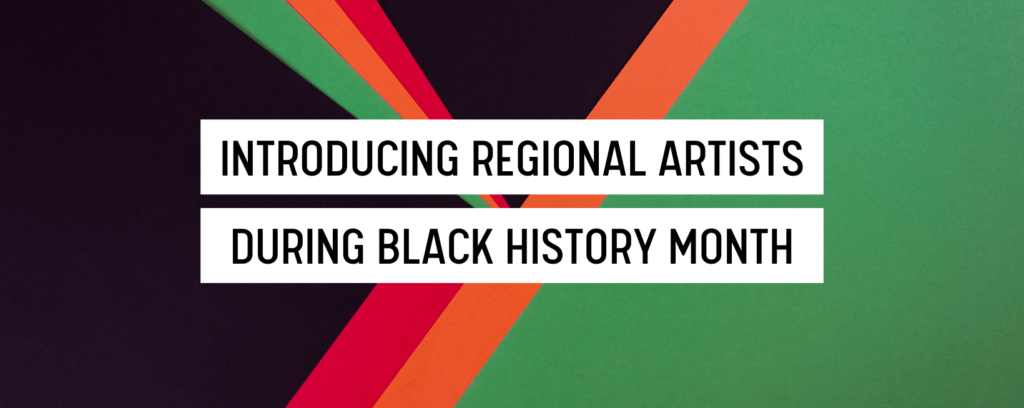
The Huntsville Museum of Art is highlighting several regional artists during Black History Month. Many of these artists have had their work on display at the Museum. Some are even local to Huntsville. This week, read along to meet six different artists and learn more about their background.
Karsten Creightney
Albuquerque, NM
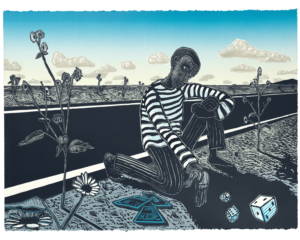
Karsten Creightney, Roadside Gambler, 2013, 3 color linocut, 30 x 22 in.
Karsten Creightney works in multiple media combining prints, paint, photographs and found materials to create images that capture the partly lived, partly imagined sense of place experienced in memory. HMA acquired Creightney’s Roadside Gambler in 2018 and displayed the piece in Looking at the Collection: Recent Acquisitions and a Celebration of African-American History Month.
Artist Statement
I start with paper. I cut it directly from old books. I cut up prints that I create in various media. I use the scraps left from the painting before. I paste it on canvas, wood or thicker pieces of paper to create fields of information. Then I work back into these initial backgrounds with paint, then more collage. Eventually, imagined landscapes emerge from the chaos. Worlds built from remnants. The border between natural and urban environments has been of interest lately. Plants, especially flowers are always present.
Trial and error is important. Re-contextualizing pieces of pictures into alternate realities can be a struggle. Scraps are, on some level, always scraps. I integrate them into the painting, yet something remains of their past lives. They speak of other pictures than mine. I like having this other voice in my paintings. It brings unanticipated questions to the conversation, and leads me in new directions, up side canyons, and down dead end alleys. My work is as much a product of discoveries made while making it, as it is deliberate. It is more orchestrated than fully controlled.
Donté Hayes
Kennesaw, GA
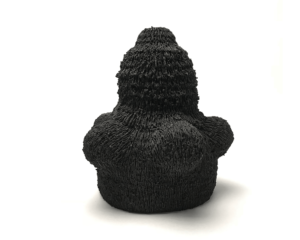
Donté Hayes, Feed, 2019, ceramic, 9 x 8 x 8 in.
Donté K. Hayes graduated summa cum laude from Kennesaw State University at Kennesaw, Georgia with a BFA in Ceramics and Printmaking with an Art History minor. Hayes received his MA and MFA with honors from the University of Iowa and is the 2017 recipient of the University of Iowa Arts Fellowship. His piece entitled Feed was part of HMA’s recurring juried exhibition, The Red Clay Survey, in 2020.
Artist Statement
My research has been focused on the pineapple as a symbol that represents welcoming and hospitality. This investigation in the rituals and the action of being welcomed or hospitable to others is from my own experiences. I have encountered many struggles in negotiating public spaces as a black man and person of color. Through this inquiry, the tradition of the pineapple as a symbol for hospitality is rooted in slavery and the agricultural colonization of South America, the Caribbean, and the Southern United States – in particular, South Carolina and my home state of Georgia. When slave ships bringing enslaved Africans docked at the wharf, the foremen placed a pineapple on a spike. The pineapple, becoming the beacon that identified a new shipment of enslaved Africans, has arrived. Thus originating the pineapple as a symbol for welcoming.
I utilize printmaking, installation, and performance to elevate the importance of my ceramic sculptures as a historical and creative base material to inform memories of the past. The handling of clay reveals the process and shares the markings of its maker. Ceramics becomes a bridge to conceptually integrate disparate objects and/or images for the purpose of creating new understandings and connections with the material, history, and social-political issues. I compare the construction and deconstruction of materials to the remix in rap music and how human beings adapt to different environments and reinvent new identities. These ceramic objects are vessels, each making symbolic allusions to the black body. The artworks suggest the past, discuss the present, and explore possible futures interconnected to the African Diaspora, while also examining deeper social issues that broaden the conversation between all of humanity.
John “Jahni” Moore
Huntsville, AL

John Jahni Moore, Beyond Symbolic Shrines To Thirst, 2019 acrylic, red clay on canvas, 52 x 40 in.
John “Jahni” Moore is a painter, muralist, organizer, lecturer, and art educator. He received his bachelor’s and master’s degrees in art from Alabama A&M University. He also received an MFA in studio arts from The Art Institute of Chicago. Jahni has taught from kindergarten to college level, all while remaining a prolific artist and muralist.
As a child, Jahni would sketch the back of his fellow parishioners’ heads in church. His first portrait was of his sister. He looked forward to art class at school and was always proud when he saw his artwork on display. Now, his work is well known in Huntsville. His first mural is still on exhibit at EarlyWorks Children’s Museum. He painted the Space Is Our Place mural at Campus 805 in 2018 and his commission for Google Fiber was recognized in Parade magazine as the best mural in Alabama in 2019. On June 20, 2020, Jahni’s ARtEvolution project was unveiled in Huntsville. He and 16 other artists participated in the project as a reaction to the death of George Floyd at the hands of a Minneapolis police officer. The art installation of multiple framed wooden panels was completed in less than a week before it was displayed in downtown Huntsville.
Jahni also works on a smaller scale. His painting, pictured above, was included in the 2020 Red Clay Survey at the Huntsville Museum of Art and was a Museum Purchase Award winner.
Debra Riffe
Birmingham, AL
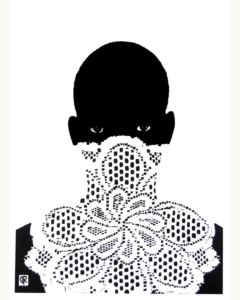
Debra Riffe, St. Clair, 2019, woodcut, 34 x 26 in.
Debra Riffe earned her BFA from Howard University in Washington, DC, and has been a professional graphic designer and illustrator for more than thirty years. She was recently featured in HMA’s Red Clay Survey and her work in the exhibition received a Merit Award.
Riffe lived abroad and traveled extensively around the Caribbean basin. She has studied under Barry Moser, the internationally renowned printmaker and illustrator, and she participates in select workshops and classes around the country. While living abroad, Riffe discovered a common set of experiences that resemble patterns found in the culture of the American South. Food, race, religious traditions and music are topics that continually shape her visual narratives.
Her style varies from whimsical to historic. Riffe enjoys the versatility and immediacy of drawing with a pencil and the physicality of turning the wheel of a printing press. Through simplicity of form, she uses basic art principles to convey shape, gesture, attitude, movement and emotion. Her compositions, mostly figurative, are images of African Americans performing routine tasks that speak of social status and identity, intimacy and a sense of place. She works from memory, sketchbook drawings, or photo references culled from newspaper and magazine clippings. Once an edition is complete and numbered, Riffe attempts to guide her viewers with a title based on dialect derived from features in southern speech. The elements of black vernacular are lyrical and layered. Often, when rooting around her favorite bar-b-que haunts or juke joints in Alabama and Mississippi, she will extract bits and pieces of random conversations that she has overheard or engaged in and combine phrases or expressions into her titles.
Although she was introduced to printmaking in college, Riffe’s technical skills and methods have evolved through trial and error. Printing with a single color allows for more spontaneity than mixing colors and layering in the reduction method. Debra enjoys the challenge of printing images with a rich, black, oil-based ink. The contrasts of sharp black modulating lines on bright white archival printmaking paper give each print an infinite range of tonal variations and texture. Carving wood or linoleum allows very little room for error, but she enjoys the technical challenge of balancing intricate details and negative space.
Tracy Singleton
Huntsville, AL
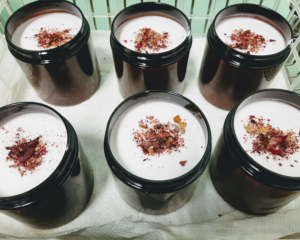
Image courtesy of Hand-crafted Things by Tracy.
Tracy Singleton is an educator and artist. She is the owner of Hand-Crafted Things, a small business in Huntsville. Singleton taught herself the craft of making artisan soap, candles and lotion through years of research, demonstration, trial and error. She also enjoys sewing and creates one-of-a-kind art, gifts and accessories using various art media.
In 2012, Singleton opened her own candle, bath, and body boutique. Formerly called T-n-T Treasures, it is now known as Hand-Crafted Things By Tracy. All of the soaps and body products are handmade using traditional methods and the finest quality ingredients. The recipes and designs are Singleton’s own creations and are inspired by simple ingredients that are available from Mother Nature’s garden. She also teaches classes on soap making. Her studio is located in Lowe Mill.
Tracy is living out her dreams and doing what she loves to do by teaching and creating something beautiful that she can share with the world.
Jared Small
Memphis, TN
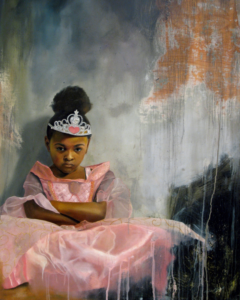
Jared Small, It’s My Party, 2009, oil on panel, 40 x 30 in.
Jared Small has gained critical acclaim for his unique paintings on panel and vellum that are generally focused on arresting and dreamlike portraits, arrangements of flowers floating in ethereal spaces, and stately yet dilapidated Southern homes existing in ambiguity. Small is essentially self-taught and considered a prodigy. He describes his practice as trying to imagine other people’s memories — memories that are fading, but still there. Working from photographs, as well as from his imagination, he paints in a style similar to magic realism, with the center of each composition focused on a painstakingly accurate image while the background often dissolves into abstract elements. This technique allows the artist to hypnotize the viewer into a dream-like state, caught between the realities of the obvious and the mysteries that seem to exist beneath the surface.
A native and lifelong resident of Memphis, Small attended the University of Memphis and has participated in numerous exhibitions in the region. His work may be found in many private and corporate collections, as well as the permanent collections of the Huntsville Museum of Art and the Memphis Brooks Museum of Art. His first major museum exhibition, Encounters: Jared Small – Southern Moments in Time, was on display in the spring of 2019 as part of HMA’s ongoing Encounters series.

